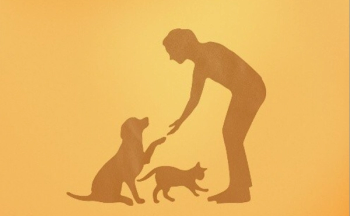
Elucidating the consequences of COVID-19 for veterinary practices
Take a listen as veterinary experts detail how COVID-19 is impacting the veterinary profession—and what the future may hold.
As COVID-19—and the world's reaction to it—continue to evolve, veterinarians are looking to both veterinary organizations and their peers for news and information about how to continue providing essential veterinary care while keeping their teams safe.
For the latest on how COVID-19 is impacting the practice of veterinary medicine, dvm360's Chief Veterinary Officer Adam Christman, DVM, MBA, spoke with Scott Weese, DVM, DVSc, DACVIM, professor of internal medicine, zoonotic disease, public health and microbiology at the University of Guelph Ontario Veterinary College, and Beth Davidow, DVM, DACVECC, clinical assistant professor of emergency and critical care at Washington State University College of Veterinary Medicine.
Together, these veterinary experts detail what is known about COVID-19 and how it is impacting the practice of veterinary medicine, including these key topics:
- Providing the best possible care during the pandemic
- Discerning what are 'essential' veterinary services
- Donating ventilators to human hospitals
- How the veterinary teams and veterinary communities are uniting during this crisis
- Maintaining the human-animal bond during the crisis
- Implementing PPE and social distancing in practice
- Testing a feline antiviral drug for COVID-19
Check out their conversation in the video below.
Dr. Christman: Let's first start talking about what is COVID-19? Can you shed a little bit of light on the basics of what it is and how it got here?
Dr. Weese: I think we've all had a pretty big crash course in coronaviruses over the last few months. So everyone's got a little [of the] basics on that. The key thing for us on the veterinary side is, this is a coronavirus closely related to SARS that emerged in China in December, maybe a little bit earlier than that. So it originated in a bat, as far as we know, maybe came through an intermediate mammal host, but then settled on people and, as you know, spread widely across the world and [is] causing the disease that we call COVID-19.
One of the big questions we have on the animal side is whether this is now a purely human disease, or is it a predominantly human disease? No doubt, this is almost all human-to-human transmission, but from a veterinary context, we have to think about if there is potential for our patients to get infected, which is something we need to deal with from an infection control standpoint.
Is there potential for our patients to get their haircoats contaminated and act as a fomite or mechanical vector? And then the broader issue is just, how do we work in veterinary medicine while social distancing? How do we work in an era where we're running out of supplies, because those are getting diverted, obviously to the human healthcare system, so it's bringing up a lot of issues that pertain to medicine, basic infection control, and things we hadn't thought about [that are required for] maintaining a vet clinic.
Dr. Christman: Yeah, absolutely, it's definitely turned the way in which we practice veterinary medicine upside down. Beth, how has COVID-19 affected the way you practice?
Dr. Davidow: Well, so it's affected me in a couple of ways. So, as a professor at the veterinary school [at the Univeristy of Washington], most of the veterinary colleges have sent all their students home to try to minimize the amount of infection and try to maximize social distancing. That means that the first-, second- and third-year students are now learning online. And the fourth-year students, many of them are missing clinical rotations and trying to learn as much as they possibly can before becoming veterinarians, also online.
In the Seattle area, we were one of the first hit by this virus. We had one of the first cases in the United States. And the veterinarians in this area have been adopting curbside check-in and, also with the governor's order, almost everybody has switched now to doing only essential care, which means no elective procedures. So it's a huge change for the way we practice medicine in this area.
Dr. Weese: Maybe I'll ask another question there. So that question of essential versus elective is really a big one, right? So in Ontario, they just said, okay, essential services only, and veterinary medicine is included in that with not a lot of guidance. I've seen some states with very rigorous things saying these are the types of things that are elective and essential. Has Washington, have they said anything in detail, because I think we can take this whole elective–essential thing down at a lot of different roads and not get the same answer each time.
Dr. Davidow: Yeah, I think it's a super complicated question. And I think if you asked every veterinarian, people would have very different answers. In the Seattle area, it's basically said anything where you're using PPE, you should be trying to minimize as much as possible, but there hasn't been a ton of guidance yet on specifics. The questions become, what if you have a pet who has cancer who needs chemotherapy? You're using PPE to treat those animals. I think many vets would say that's essential. But what if that pet has a very low likelihood of survival? What should we be doing in that situation?
I think vaccines are another really tricky thing to answer. Certainly, I think all of us want any pet who hasn't had a rabies vaccine getting the rabies vaccine. Almost every [rabies vaccine] is considered essential. But what about parvovirus vaccines for young puppies? Certainly having a parvo outbreak or a kennel cough outbreak in the middle of a coronavirus outbreak doesn't sound very fun to me. It’s super tricky.
Dr. Weese: So some of these are kind of easy, right? The hit-by-car, the hemoabdomen, we need to treat those. The cancer therapies are ones when, you know, new cancer therapies or in the middle of a therapy, painful disorders are kind of gray. So we got an animal that needs a TPLO, should we maintain it on an NSAID? You know, what's the good and bad point?
That's really case by case. And then one thing that we're really trying to emphasize that gets missed is the human-animal bond component here. People are stressed, they're freaking out, they're stressed, they're confined to their homes. Sometimes their pet is their lifeline. And we need to make sure that we're not compounding that stress by saying, okay, well, we can't take care of your animal right now because you're locked away.
So we have to be aware of that too because we don't want unnecessary animal welfare issues. We don't want human welfare issues. So it's really challenging. It's coming down to really case-by-case definitions. We need to make sure I think, as a profession, we're showing we're socially responsible: saving PPE, like you said, helping with the social distancing, but also trying to maximize what we do, and that's tough.
Dr. Davidow: I think one of the things that is also really tough is that on the human side it's very hard to know what to do and so talking to a veterinarian in New York last night, the orders on what was essential and what wasn't changed multiple times in a 48-hour period. And that makes it really tricky to practice because you have to really be paying attention to what people are saying. Yeah, I think this is definitely a complicated issue. And certainly I do absolutely agree with you that our pets really are essential to our wellbeing. And trying to make it both as easy as possible for people to get care for their pets but also minimizing contact between all of us is super important.
Dr. Christman: I agree, it boils down to that human-animal bond and it's testing that bond more so than ever right now. And it's trying to find that balance, essentially, what's essential versus non-essential. And if the human’s life gets compromised in the face of an animal, where is that gray zone essentially? You know, that's what makes it tough. Beth, I wanted to ask you this, too, because there's obviously a crisis with ventilators. Can you share with us a little bit of light on that wonderful piece of information that you helped create for the rest of the profession?
Dr. Davidow: Yeah, so one of the discussions we started having as the American College of Veterinary Emergency and Critical Care is that we do have life-support ventilators in our facilities to treat animals who have things like pneumonia or smoke inhalation or damage to their lungs from a trauma. But we don't use those as often as they're using them in the human side. And so they're mostly available.
As we started talking as a group, we realized that some people had already been in contact with human hospitals to let them know that we had those available, but … on a nationwide level they've been very kind of point to point. And so we made the decision to try to set up a nationwide database and we just did this using a Google form, which then feeds into a Google spreadsheet. And we then shared that spreadsheet with the Society for Critical Care Medicine, the American Hospital Association and the American Medical Association on the human side, so that they could share it out and let people know, hey, there's veterinary hospitals who have these. Here's how you contact them if you need them.
And there's about 180 hospitals who have ventilators listed on the list. Most of us only have one or two of these machines, so not a lot. I now know of at least 40 hospitals who promised their ventilators to a human facility and I know of at least six facilities who've actually either given their ventilator up to a human facility or know that it's actually already in use, especially in the New Jersey and New York areas.
Dr. Christman: I can personally attest to that because I know that one of the hospitals locally here, North Star Vets, they donated their ventilator to Robert Wood Johnson [for] six children that actually needed to be put on the ventilator. So, because of that piece of information, look how wonderfully in a good way we were able to help the human side out. So that's fantastic.
Talk to me a little bit about the community that you guys live in. How's the veterinary community coming together in times like this?
Dr. Weese: So in Canada, our veterinary community is actually fairly small—we're big country but a small population—and we have a fairly good community that communicates fairly well. And from the very start, there's been a lot of discussion on how we maintain veterinary care but do it while being socially responsible. And a lot of that was like Beth said, to start curbside admissions. Those got brought in fairly early.
We found [through a survey that's been done] that most clinics are doing multiple measures to reduce social contacts. So, having fewer contacts with owners, fewer contacts in clinics, trying to do things to minimize any hand contact points. So, paperwork and pens, bringing in telemedicine. Our regulators have been very good saying, okay, these are different times we don't really set standards, we have expectations. So, if we get into issues with PPE shortages, or verbal consent, we have to document verbal consent, but we don't need everyone to sign everything. So, I think our different groups are all coming together and thinking of how we can maintain the best animal care we can in this ‘new normal,’ at least this temporary ‘new normal.’
Dr. Davidow: Yeah, I think one of the things that's been really interesting is looking at how communities are forming in different ways to support each other, I think VIN (Veterinary Information Network) has become a really good resource. They put out a bunch of COVID-19 information both for how to work in clinics, and then they're working very hard to make sure that businesses have the information they need to stay viable during this incredibly challenging time.
The veterinary colleges have all been in lots of communication about trying to do the right thing for their students.
And then on the local level, I think this is where our state associations have really proven how valuable they are and how important they are. The Washington State Veterinary Medical Association has been great about getting local resources out to us and trying to make sure we have the information we need about how we get fast loans, what kind of programs is the governor putting out to help businesses, and so those different communities have all been really important to support each other.
Dr. Weese: And I think we have people who are searching for information too, which is good. They're thinking about ideas, thinking about problems, and everyone's talking and asking. We've been putting out information on our blog about social distancing and elective [vs] essential procedures and how to admit animals, personal protective equipment and things like that based on all the discussion that's coming up.
So I think we've got various people coming together to come up with ideas and we're winging it, right? We don't have data—it's a virus we've known for three months. And from the animal side, we know almost nothing. But we're taking the standpoint, okay, we need to be proactive. we don't need proof of a problem before we start bringing in some solutions. And I think everyone's a lot more proactive than we probably would have been five or 10 years ago. I think we keep learning as we go through these episodes.
Dr. Christman: One of the things I'll share with you, too. I'm on the board for the NJVMA and because it's such a dynamic [situation], it changes so quickly, we've been doing these Facebook live events just to get engagement within the local level just about labor laws and employment opportunities and what's happening with what we need for our PPE.
And just like you were saying … I feel like just staying on top of that and being consistent within the community has been a good nidus of communication on the local level, at least, for the veterinarians and the support team.
I want to ask you, Dr. Weese: What are your thoughts on the recent announcement that a feline antiviral drug for FeLV and feline infectious peritonitis (FIP) is now being tested against COVID-19?
Dr. Weese: So, there are various drugs that are being tested for this disease and, you know, everyone's pulling out all the anti-coronavirus drugs they can find. There's been one that's been used in cats pretty much on the black market for a while with a lot of potential for the treatment of FIP. And the problem is that hasn't been available commercially because the manufacturer has a very similar drug that they've been getting licensed for Ebola.
So, people have had to source this through questionable channels and black market sources. Now the human drug remdesivir has been used in people and some trials are going on with some, you know, moderate success it sounds like. From us on the animal side, this may ultimately help us because if we get a licensed drug for this product that's out there in humans, we might have a licensed product that we can use off label in animals. We're going to learn a lot more about coronavirus drugs because of this disease. And, ultimately, we'll hopefully be able to take some of that and apply that to coronavirus diseases we've seen animals, and particularly FIP.
Newsletter
From exam room tips to practice management insights, get trusted veterinary news delivered straight to your inbox—subscribe to dvm360.






